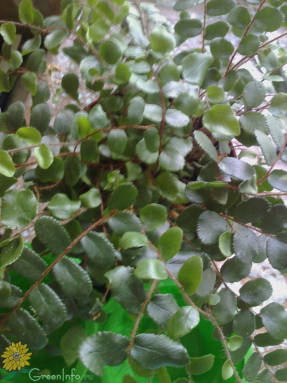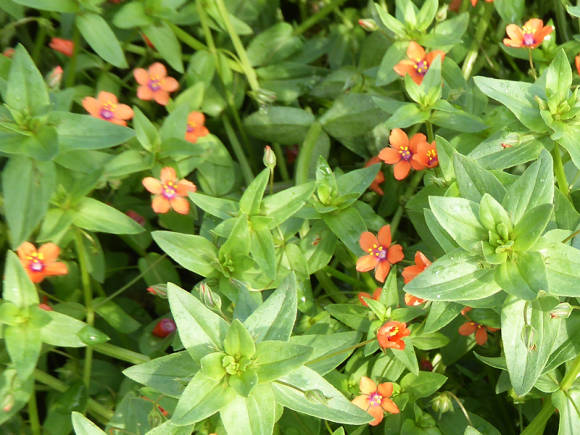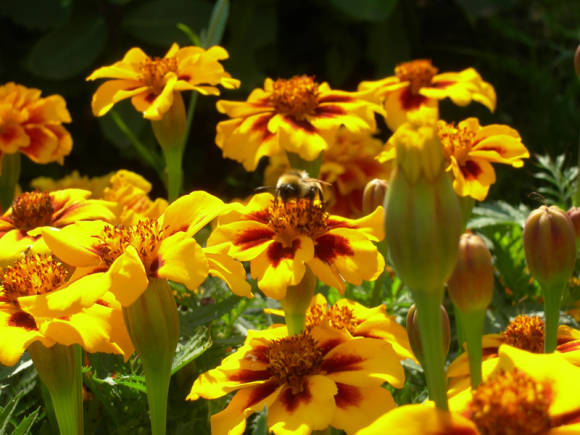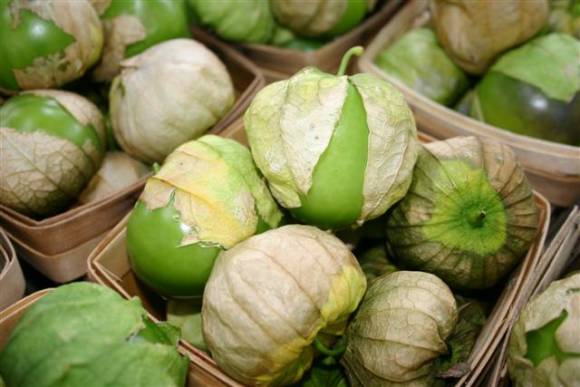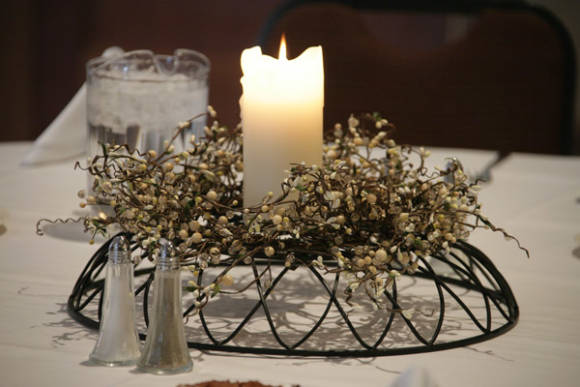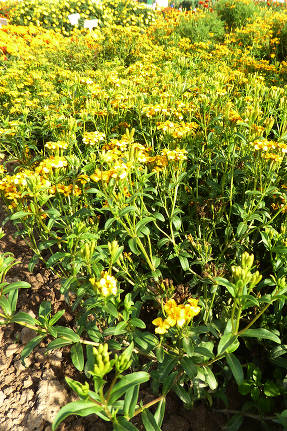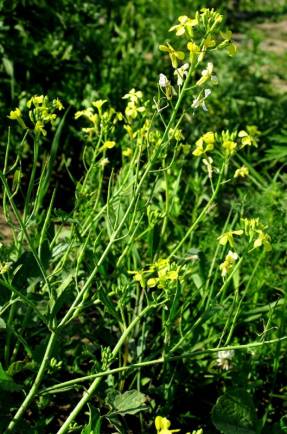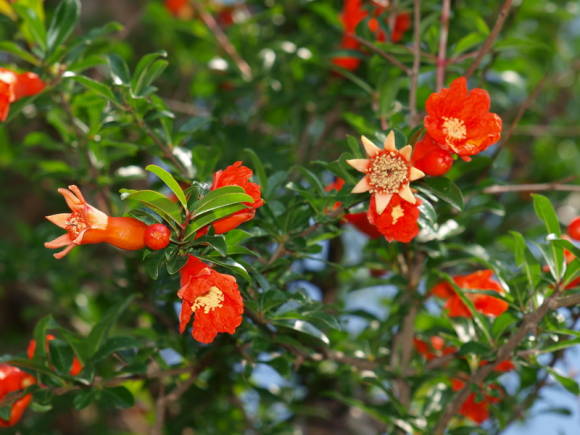The manner of spreading zelenchuk with the help of rooting horizontal shoots is quite common for plants. This is how the periwinkle, the tenacious, and the loosestrife grow. Strawberries and dusheney grow in a similar way.
This herb is found in forests from the center of Europe to Western Siberia. Zelenchuk is an excellent ground cover, attractive by its naturally variegated variegation. The silvery form of zelenchuk, widespread in gardens, is in no way inferior to the wild species in its unpretentiousness, and the compositions with its participation are distinguished by their natural naturalness.
It would seem that everyone is good at Zelenchuk - he has cards in his hands. But he also has a "fly in the ointment", which is worth knowing a priori - he is very aggressive. And this imposes some restrictions on its application.
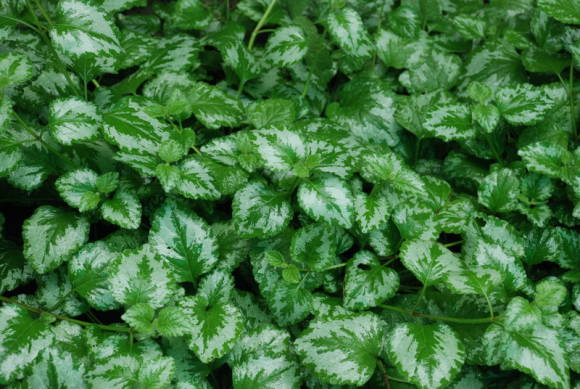
Colorful carpet from snow to snow
There are plants that are universal, suitable for many places and for different subjects. Wherever they land, they look natural everywhere. Zelenchuk belongs to plants with a pronounced specialization. Variegated evergreen leaves and the ability to form colorful solid carpets make it one of the most spectacular soil perennials. But the plant's inherent aggressiveness does not allow using Zelenchuk "to the full extent." By allowing it into any composition, you risk that Zelenchuk will invade neighboring areas as an uninvited guest.
But there are many cases where vitality and aggressiveness are not only appropriate, but also desirable. These are, first of all, plots that can be given to Zelenchuk for monopoly ownership. After all, having completely mastered the territory entrusted to him, he will no longer let anyone into his lodgers. And you will have a maintenance-free, bright all-season carpet without any special worries.

So you know
Zelenchuk yellow, according to modern classification, it is more correct - zelenchukovaya clearnet, or yellow(Lamium galeobdolon syn. Galeobdolon luteum) - a perennial herb of the family of lamines up to 20-30 cm high. The flowering shoots of the plant are erect, and the vegetative ones are creeping. The flowers are typical for the family "lipped" structure, yellow, relatively large. The plant blooms in May-June.
The main decorative attraction of Zelenchukovaya is not flowers, but leaves. They are broadly ovate, crenate along the edge, dark green, with well-defined silvery spots. In this case, the spots are localized closer to the edges of the sheet, without capturing the bottom and middle.
 |  |
Growing
In nature, Zelenchuk grows under the canopy of trees, preferring moderately moist fertile loams. It is shade-tolerant, drought-resistant, but does not tolerate the competition of large grasses, especially cereals. For this reason, in the Non-Black Earth Region, the plant often settles under the crowns of fir trees, where it grows almost alone.
Planting site, soil... Zelenchuk does not like direct high sun. The sun is especially unfavorable in combination with dryness. He easily and willingly climbs the slopes. The slopes of all exposures are suitable for him, except for the most sunny - southern and southwestern. In nature, by the way, the plant gravitates towards ravines and wooded slopes along the banks of streams and rivers, in which it most often chooses the most shady northern slopes. In favorable conditions, it occupies a dominant position at the foot of shrubs and trees.
Although zelenchuk is shade-loving, it grows equally well in the open sun, provided that the fertility and moisture content of the substrate are optimal enough. By the way, in strong shade, Zelenchuk significantly loses its silver outfit, and it is most intensely colored in the sun or in light partial shade. Under ideal conditions, the spots on the leaves acquire bright, intense shades, and the size of the leaf blades increases markedly.
The most suitable soil for zelenchuk is fertile and moisture-absorbing light loam.The substrate can be modeled on the basis of leafy earth, humus and sand by mixing these components in a 1: 2: 1 or 1: 1: 1 ratio. The root system of Zelenchuk is relatively shallow, so the cultivated soil layer may be small: 8-10 cm is quite enough.
Top dressing.Watering. Zelenchuk tolerates short-term "interruptions" with precipitation without noticeable consequences, but chronic drought is harmful to the plant. The growth of shoots and leaves stops, the leaves lose their turgor and become noticeably smaller, their silvery outfit loses its brightness. On the contrary, fertilization and regular watering contribute to a more intense coloration of the leaf blades. Zelenchuk grows vigorously, crowding other plants.
It is necessary to fertilize the formed carpets of Zelenchuk superficially, pouring fertilizer directly onto the leaves. It is enough to do this 1-2 times per season. The first time in early summer (when the dandelion blooms), the second - in July-August. It is best to use peat crumb (or loose humus) as a fertilizer at a dosage of 70-100 g / m2. In a run-off with organic matter, it is useful to feed with a mineral (NPK) mixture - 5-8 g / m2. Watering zelenchuk is shown in small doses, but more often, so that the soil always retains moderate moisture.

Landscaping use cases
Zelenchuk is especially interesting for decorating places that can be given to him at the absolute disposal. In general, these are all places where its spread in breadth is blocked by natural barriers. Strange as it may seem, there are a lot of such places in the garden and next to it. These are paving windows; spaces between the walls of houses and asphalt; areas bounded on all sides by paths, etc. Having filled the entire territory allotted to it without gaps, Zelenchuk successfully resists stray weeds such as sow thistle and dandelion, saving you from tedious weeding.

Filling tree and shrub feet. Having a superficial root system, Zelenchuk does not harm the growth of trees and shrubs at all. Based on this, it is shown to be used to fill all kinds of "aisles" in decorative compositions. As a padding, zelenchuk forms harmonious pairs with spruce, fir, columnar varieties of thuja and junipers. Forms interesting combinations with many flowering shrubs. It can also be applied under ordinary park trees - maple, linden, ash ...
Sodding isolated areas... Zelenchuk is resistant to gases, therefore it can be successfully used in an urban environment. They, for example, can plant trees on dividing islands and flowerbeds of road interconnections. It makes sense to plant it in city courtyards, creating low-maintenance compositions with its participation. For example, near the northern walls of high-rise buildings, where little can grow normally. In private buildings with zelenchuk, you can draw up the strips between the fences and the sidewalk. In all cases, it should be remembered that the density and decorativeness of the zelenchuk "lawn" directly depend on the quality of the soil.
 |  |
Island (rock) in the silvery green ocean. This plot is laconic to the limit - there are only two characters in it: a stone that personifies a rock, surrounded by a zelenchuk "lawn" that imitates the sea. But since both the stone and the configuration of the "lawn" can have a wide variety of designs, the plot as a whole is multivariate. There is only one requirement for a stone - it must be large enough. Basically, the bigger the better. In any case, at least 80 cm high. It is also desirable that it contrast in color (or harmonizes) with zelenchuk. It can be either a rolled boulder or an irregularly shaped rock debris. The long stone must be dug in vertically so it will look better.

Zelenchuk in high containerre. If the zelenchuk is planted in a sufficiently high pot, then the plant will fall down picturesquely. Over time, Zelenchuk will completely hide the vessel underneath and begin to creep along the ground.Such an unusual "bump" in the middle of the green-silver "lawn" looks not only spectacular, but also mysterious. By the way, an ordinary plastic bucket is suitable as a container. It is desirable to have a "protective" color. A rather high tire can also serve as a variant of the "container". Buckets with zelenchuk can be placed on the asphalt as a seasonal decoration, wherever it is appropriate.
Plants for the garden by mail:
actinidia, barberries, blueberries, spruce, honeysuckle, cranberries, currants, hydrangeas, junipers, rhododendrons, roses, spireas, tamarix, thuja, hosts, mock-mushrooms ... and much more.
Inexpensivebecause we grow ourselves.
Winter hardy and reliablebecause it has been tested for many years.
Shipping experience in Russia since 1995.
Catalog in your envelope or on the website.
600028, Vladimir, 24 passage, 12
Smirnov Alexander Dmitrievich
Email: [email protected]
Tel. 8 (909) 273-78-63
Online store on the site www.vladgarden.ru
